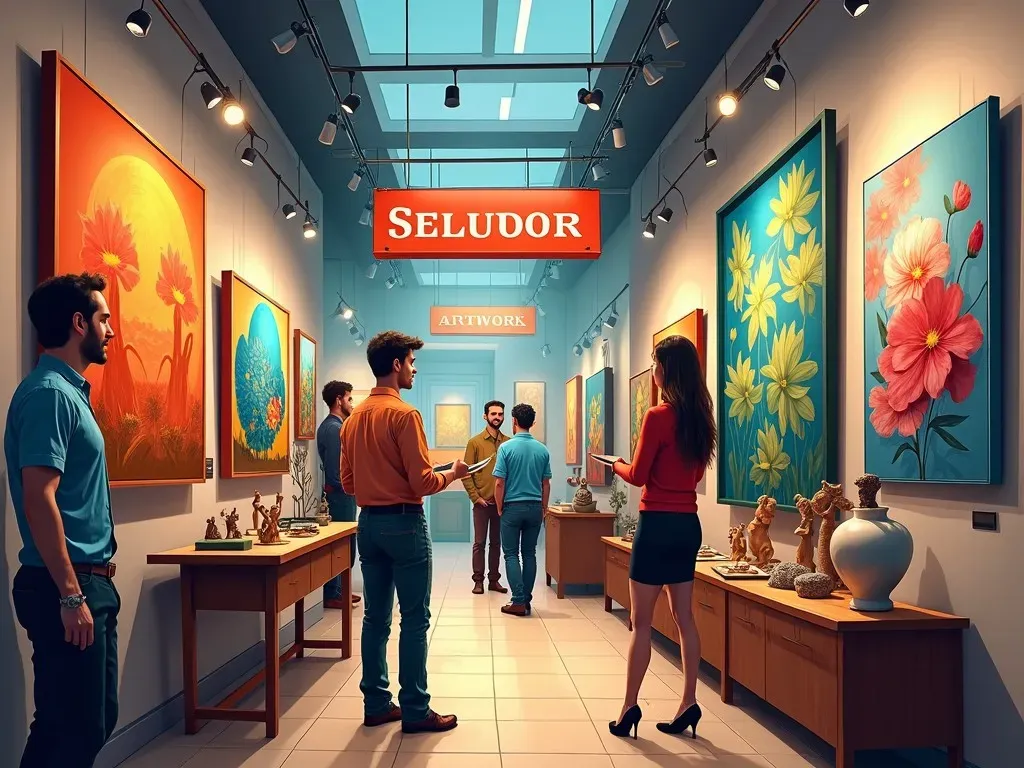The search for best selling artwork often leads art lovers and collectors to exciting discoveries in the vast world of visual creations. From stunning paintings to mesmerizing prints, the realm of art sales is dynamic and ever-changing, reflecting both current trends and timeless themes. Many factors influence the status of artworks that dominate the market, including artist reputation, style, and societal climate.
Factors Defining Best Selling Artwork
A multitude of factors contributes to the success of various art pieces in the market. Some key components include:
-
Artist Reputation:
- Established artists often enjoy more sensational prices for their artworks compared to emerging talent. As their names become synonymous with quality and prestige, collectors are willing to pay a premium.
-
Market Trends:
- Trends in design, color, and style affect what customers are interested in. For example, in recent years, happy, bright colors have gained favor among art buyers, indicating a shift from minimalism to vibrant expressions.
-
Art Format:
- Certain formats perform consistently better, with canvas prints and wall art maintaining popularity among consumers, as they can easily be integrated into home decor.
-
Emotional Resonance:
- Art that tells a story or evokes emotions tends to sell exceptionally well. Consumers often seek pieces that connect with their personal experiences.
Here’s a list summarizing the most popular types of best selling artwork:
| Type of Artwork | Description |
|---|---|
| Paintings | Original works often fetched at high prices. |
| Canvas Prints | Affordable reproductions widely appreciated. |
| Photography | Stunning visuals capturing unique moments. |
| Abstract Art | Engaging compositions that stimulate emotion. |
| Landscapes | Timeless scenes reflecting nature’s beauty. |
Notable Styles in Best Selling Art
When it comes to identifying best selling art, certain styles consistently rise to the top. Here’s a look at some of the most successful formats:
- Abstract Art: Non-representational pieces often attract those looking for unique expressions that challenge traditional forms.
- Impressionism: Works that embody moments in light and color remain timeless favorites.
- Street Art: With the rise of urban culture, graffiti-style artworks have made significant inroads into mainstream art markets.
- Pop Art: Bright, contemporary styles that often utilize themes from mass media draw a younger audience.
Fast-Selling Paintings and Artists
The arena of contemporary artwork has been particularly robust in the last few years, with several specific pieces becoming household names. Here’s a selection of some fastest-selling paintings of recent times:
| Title | Artist | Selling Price | Year Sold |
|---|---|---|---|
| Femme assise près d’une fenêtre | Pablo Picasso | $103.4 million | 2021 |
| Shot Sage Blue Marilyn | Andy Warhol | $195 million | 2022 |
| Untitled (1982) | Jean-Michel Basquiat | $110.5 million | 2022 |
| The Salvatore Mundi | Leonardo da Vinci | $450.3 million | 2017 |
Popular Prints That Sell Fast
For those interested in best selling wall art, statistics show that certain prints are favored for their versatility and comfort in home settings. Here is a look at the most trending prints in today’s market:
| Print Name | Artist | Price Range |
|---|---|---|
| Starry Night Canvas | Vincent van Gogh | $59 – $99 |
| The Kiss | Gustav Klimt | $34 – $88 |
| Girl with a Pearl Earring | Johannes Vermeer | $45 – $70 |
| The Persistence of Memory | Salvador Dalí | $39 – $95 |
Understanding the Art Market
Navigating the art market can be daunting. However, understanding basic components of art sales can make a tremendous difference. Here are some tips for potential buyers and collectors:
- Research Artists and Styles: Evaluate the artist’s body of work and their market performance.
- Attend Auctions and Shows: Direct exposure can give insight into what sells and for how much.
- Leverage Online Platforms: Websites like Artsy offer access to both established and emerging artists’ works.
- Explore Limited Editions: Limited prints often retain value and are a great investment for future resale.
Frequently Asked Questions
Q1: What kind of artwork is most profitable?
A1: Original paintings by established artists typically fetch the highest prices, but popular prints and limited editions also generate significant revenue.
Q2: How can I find trending artwork?
A2: Follow art market reports, join art-focused social media channels, and subscribe to newsletters from galleries and auction houses.
Q3: Where can I buy affordable best selling art prints?
A3: Websites like iCanvas and Saatchi Art provide a wide range of artworks at various price points.
Q4: Are there specific themes that appeal to buyers?
A4: Yes, themes such as nature, family, nostalgia, and abstract emotions usually resonate well with collectors.
Q5: What role does social media play in art sales?
A5: Social media is vital for promoting artists and their works. Platforms like Instagram allow artists to reach larger audiences, showcasing their works to millions.
Conclusion is omitted as per the guideline.
This guide serves as a foundational exploration into the mechanisms behind best selling artwork. By staying informed on trends and understanding the preferences of the art community, both novice buyers and seasoned collectors can navigate the intricate world of art sales with confidence and success.
